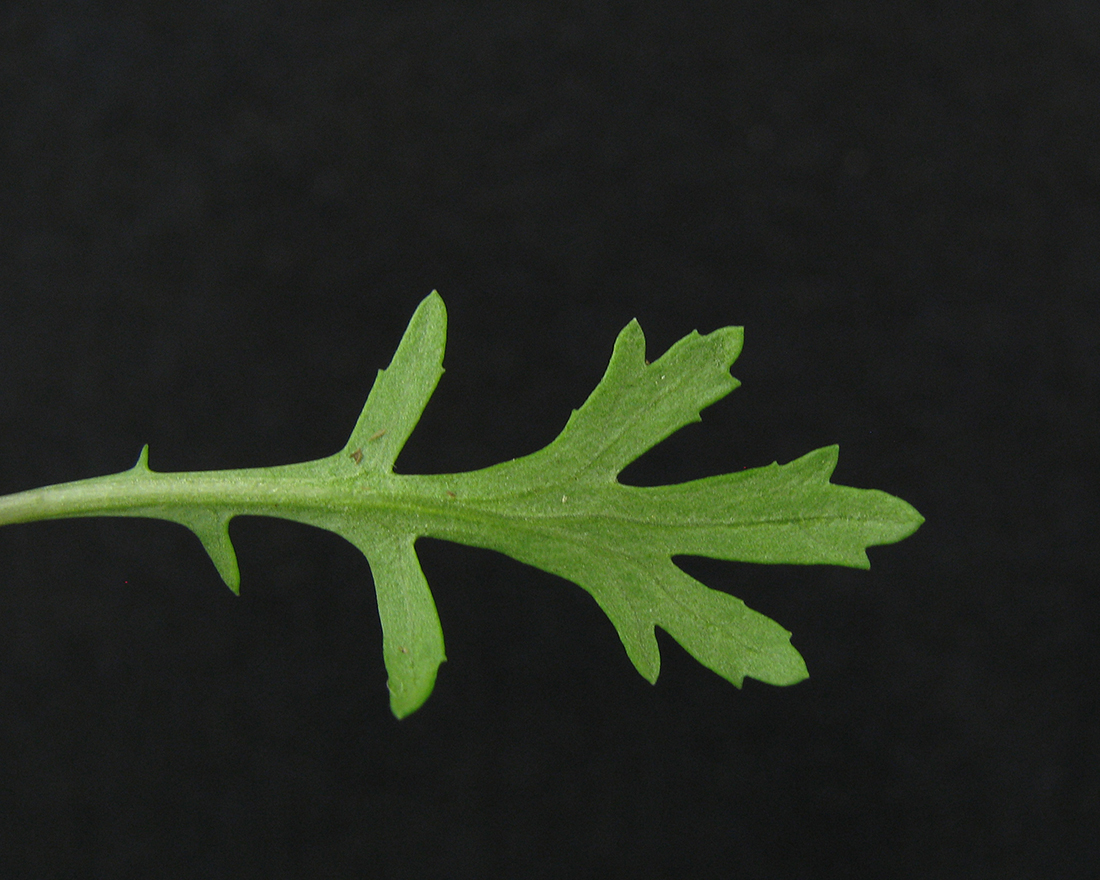Biennial Wormwood
- Composite or Aster (Asteraceae family):
- Artemisia biennis Willd.
- EPPO code:
- ARTBI
- Other names:
- Carrot weed
Species information
- Lifecycle:
- Annual or biennial.
- Propagation:
- Reproduces by seed.
- Emergence:
- Most seedlings emerge from early spring to early summer.
- Range and habitat:
- Found throughout Ontario; tolerates wet soils and can survive moderate flooding; more commonly found in cropping systems with reduced tillage.
- Competitiveness:
- North Dakota studies have documented yield losses in soybeans as high as 44% (Nelson and Kegode, 2006).
Identification clues
Leaves
- Cotyledons:
- Oblong-lanceolate.
- Young leaves:
- Basal rosette, deeply divided, hairless.
- Mature leaves:
- Alternate leaf orientation, deeply divided, hairless.
Mature plant
- Stem:
- Erect, smooth and hairless; height is variable and will depend on environment but ranges from 10–150 cm.
- Flowers:
- The compact inflorescence contains clusters of round yellowish-green flowers and is leafy throughout.
Often mistaken for
I know it's not Wild carrot because Biennial wormwood has oblong-lanceolate cotyledons compared with the extremely narrow cotyledons of wild carrot. The leaves of wild carrot are more finely divided than biennial wormwood and will smell like carrots when the plant tissue is crushed.
I know it's not Common ragweed because comparing the leaves of each plant will make their differences obvious. The leaves of common ragweed are hairy and have rounded edges whereas biennial wormwood leaves lack hair and have sharp edges.





Updated: June 17, 2025
Published: January 13, 2023